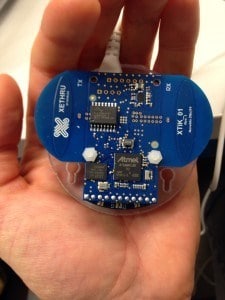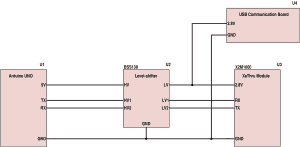- How to Adjust X and Y Axis Scale in Arduino Serial Plotter (No Extra Software Needed)Posted 4 months ago
- Elettronici Entusiasti: Inspiring Makers at Maker Faire Rome 2024Posted 4 months ago
- makeITcircular 2024 content launched – Part of Maker Faire Rome 2024Posted 6 months ago
- Application For Maker Faire Rome 2024: Deadline June 20thPosted 8 months ago
- Building a 3D Digital Clock with ArduinoPosted 1 year ago
- Creating a controller for Minecraft with realistic body movements using ArduinoPosted 1 year ago
- Snowflake with ArduinoPosted 1 year ago
- Holographic Christmas TreePosted 1 year ago
- Segstick: Build Your Own Self-Balancing Vehicle in Just 2 Days with ArduinoPosted 1 year ago
- ZSWatch: An Open-Source Smartwatch Project Based on the Zephyr Operating SystemPosted 1 year ago
Arduino Radar: How to fade an LED with your breath
Web site:
http://www.build-electronic-circuits.com/arduino-radar-tutorial/Project Summary:
In this project, I will show you how to use an Arduino to work with the radar module from XeThru. The radar will sense my breath without any contact, by using electromagnetic pulses to measure the movements of my belly. Then I map these movements into control the intensity of the LED.
Full Project:
I got my hands on this new cool radar module from XeThru (http://xethru.com).
Using off-the-shelf components, I hooked it up to my Arduino Uno on a breadboard.
It uses electromagnetic pulses to measure the movements of my tummy when I breath. I use this measurement to fade the LED in and out.
The cool thing is that it can see through things. So you could also build it into a chair to see that your grandma is still breathing, or into a mattress to measure the quality of your sleep.
I posted all the details, hardware, code and everything on my blog with a hope to see more people playing around with this technology:
http://www.build-electronic-circuits.com/arduino-radar-tutorial/
I think we’re going to see some pretty cool projects when this technology gets more widespread.
Circuit diagram:
Bill of Materials:
- Arduino UNO
- XeThru radar module (http://xethru.com)
- 2.8V voltage source
- BSS138 level shifter
- RGB Led
- 3 x 100 Ohm resistor













